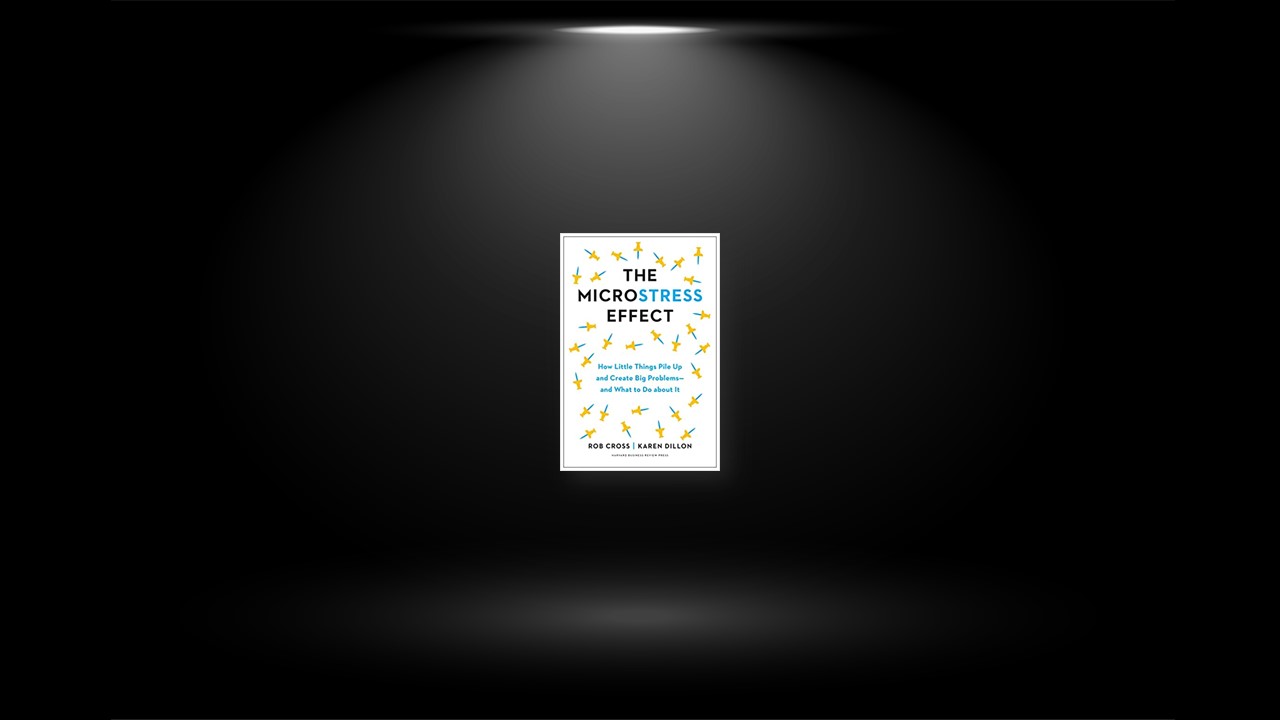A Crisis of Well-Being
We can’t escape microstress, because the people who are unwittingly causing it are embedded in our personal and professional lives.
Microstress comes at us quickly and in small moments; it doesn’t set off the typical fight-or-flight vigilance systems that help us survive other, more noticeable forms of stress. Our bodies experience the cumulative impact of the microstress, but the cause of that stress remains invisible to us.
Microstresses can set off a chain reaction of primary, secondary, and sometimes tertiary consequences that can last for hours or even days, though you may not connect the effects to the original microstress.
You can mitigate the impact of microstress. You can’t eliminate microstress (unless you want to move to a desert island or become a recluse!). But you can learn strategies for reducing its volume, depth, and negative effects and for making your connections with people in your personal and professional networks integral to your well-being.
Why You Can’t Keep Up Anymore: Microstresses That Drain Capacity
Microstresses that drain our personal capacity sneak into our already-overloaded days, make the days longer and less fulfilling, force us to endure the costs of constantly switching focus, cause us to be less productive, and bleed into our personal lives. Capacity-draining microstresses have five typical causes: Misaligned roles and priorities. Small performance misses from colleagues. Unpredictable authority figures. Inefficient communication practices. Surges in responsibilities.
A single microstress that happens in just a moment or two can trigger ripple effects that last for hours or even days—not just for you but also for your colleagues, your family, and your friends. You can push back on microstresses that drain personal capacity in a way that makes a significant difference in your everyday life, once you understand their source and toll they’re taking.
Why Others Drain Your Energy: Microstresses That Deplete Your Emotional Reserves
Professional interactions that create emotional burnout have grown exponentially in the past decade. But the most emotionally draining microstresses can come at us from people we care deeply about, including our closest colleagues, friends, and family.
Five common microstresses deplete our emotional reserves but are not always obvious despite often reverberating in our lives for hours or days: Managing and advocating for others. Confrontational conversations. Lack of trust. Secondhand stress. Political maneuvering.
Our brains are highly sensitive to the emotions we pick up from others in our orbit. We become stressed or anxious because other people are. When our mind is consumed with this form of microstress, we worry, we ruminate, and we absorb the microstress and, in turn, pass it on.
Push back on emotion-depleting microstress by altering the way you interact with people. Increase your time with those who give you energy and bring you joy, and reduce your contact with people who dampen your spirit. In some cases, you may need to end your relationship with chronically negative influences.
Research tells us that negative interactions have as much as five times the impact of positive ones. Removing even a few negative relationships can make a significant difference in your overall microstress level.
Why You Don’t Feel Like You: Microstresses That Challenge Your Identity
The demands of the roles we play—at work and at home—often put us in conflict with who we set out to be in our lives. At work, these demands might come from expectations to pursue business objectives that conflict with our values or to operate in high-pressure or toxic situations that undermine our confidence. At home, we frequently have unrealistic expectations of who we are supposed to be as spouses, parents, friends, and siblings, and we beat ourselves up for seemingly not being good enough at anything.
People rarely slip away from the person they wanted to be with one decision that fundamentally changes who they are. Rather, the change happens over time in many small choices—ones we often justify as necessary to provide for our family or to pursue a given career trajectory.
Finding ways to change your interactions with people who are pushing you away from the person you want to be can have a dramatic impact on your sense of purpose in life. You can try to reshape your role, change how you interact with colleagues or loved ones, or find small ways to express your values outside of your core job. Subtle changes can make a significant difference.
What the Ten Percenters Get So Right
Negative interactions always have disproportionately large impact on our well-being. Eliminating even just two or three microstresses in your life can make a significant difference. The ten percenters do three things well that the rest of us can learn from: Push back on individual microstresses. Recognize when they are causing microstresses that boomerang back on them. Live multidimensional lives that make many microstresses inconsequential to them.
Other people are the reason we have microstress in our lives—but they’re also part of the solution. With subtle shifts in your habits and practices, you can find small ways to connect with other people in relationships that will not only provide a powerful antidote to microstress but also form a critical foundation of well-being through resilience, physical health, and purpose.
You don’t need one or two ride-or-die friends to fight microstress. Rather, a diversity of connections—at work and in your personal life—can help you keep your microstress in perspective. And help you build a more satisfying life.
The secret of ten percenters is that they live small moments more richly in connection with others. They don’t pursue happiness as something over the horizon they will someday reach—perhaps when they finally achieve a certain level of income or a particular job title or when they eventually retire. They structure their lives to create multiple groups they are an authentic part of. And they lean deeper into small moments of connection with others as key contributors to their resilience, physical well-being, and purpose.
How to Stay Healthy
By our mid-thirties, many of us start to fall out of the activities that once kept us vibrant and physically fit; we just get too busy to keep up. And we suffer the consequences as our physical health deteriorates.
People who avoid this fate don’t necessarily have more willpower, more free hours in the day, or better focus than the rest of us do. Their trajectory to improving their physical health follows a typical pattern in which the activity and their network are intimately interwoven: Elevate your physical health as a priority. Share your commitment, to make it visible to others. Create stickiness through relationships at work and at home. Reinforce and broaden your identity through activities and connections with others that focus on your well-being.
Ten percenters weave their physical health into the relationships around them. We care about sticking with the activities that make us healthier because we feel connected with the people with whom we share those activities. This connection in turn makes us persist in our pursuit of health, something that other shorter-term solutions—weight-reduction groups, for example—don’t do. Intertwining health initiatives and relationships creates a positive pull and desire to be healthy; these efforts go beyond social pressure to remove something negative like excess alcohol consumption or weight gain. Instead they are connected to positive associations with others, making it easier to stick with.
How to Find Your Purpose
People need to provide for themselves and their loved ones. But consider whether you’ve fallen into the trap of going one step too far, working a little bit harder and longer to keep up with society’s definition of success—a bigger house, better cars, fancier vacations—and losing activities, relationships, and identities you once held dear.
When you have a strong underlying sense of meaning in what you do, you’ll be more likely to reframe microstresses in ways that make them tolerable. Purpose reminds you why it’s worth hanging in there during rough patches. Despite common sentiment, purpose is not found solely in the nature of your work; your relationships with others in and out of work play a central role in the meaning you find in your life. It’s not just what you do, but how you do it with others.
We have identified five purpose generators that you can intentionally build into your everyday relationships without needing to completely overhaul your life: Seizing opportunities to help others. Pursuing personally meaningful life roles and goals. Finding authentic connections in small moments. Cocreating with colleagues. Connecting through shared values.
Purpose isn’t found only in noble work or lofty save-the-world ambitions. Ten percenters show how purpose can be effectively created through small moments of authentic connections with others in everyday life.


